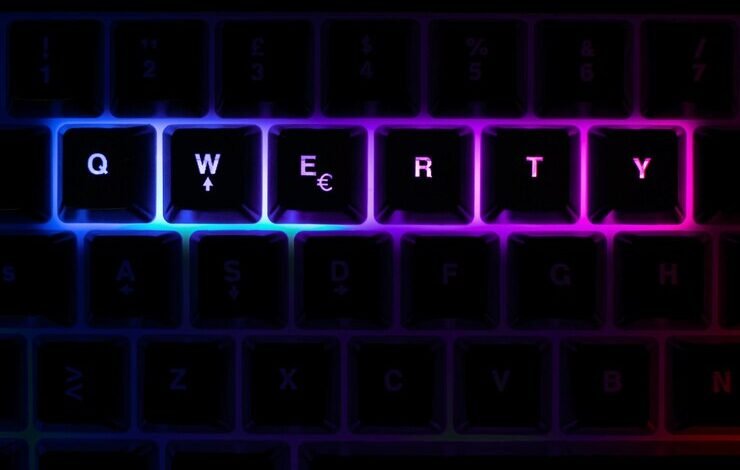Unlocking the Power of Wordplay: A Guide

Language is a playground for those who love to twist, turn, and tumble words into new forms. Wordplay isn’t just about having fun—it’s a powerful tool that can make your writing more engaging, memorable, and impactful. Whether you’re a creative writer, language enthusiast, or marketing professional, mastering the art of wordplay can elevate your craft and captivate your audience.
In this blog post, we’ll explore the fascinating world of wordplay. You’ll learn about different types of wordplay and how they work. You’ll discover practical tips for crafting your own wordplay, and see how it can be used effectively in various contexts, from marketing to education. By the end, you’ll be ready to play with words like never before.
Types of Wordplay
Puns
Puns are perhaps the most well-known form of wordplay. They play on the multiple meanings of a word or words that sound similar but have different meanings. For example, “Time flies like an arrow; fruit flies like a banana” is a classic pun that uses the double meaning of “flies” to create humor.
The beauty of puns lies in their ability to surprise and delight. They often catch the reader off guard, creating a moment of realization that can be both amusing and memorable. Puns are widely used in literature, advertising, and everyday conversation to add a touch of humor and wit.
Anagrams
Anagrams involve rearranging the letters of a word or phrase to create a new word or phrase. For instance, “listen” can be rearranged to form “silent.” Anagrams are a delightful way to play with the structure of words and uncover hidden connections between them.
Anagrams can be used to create intriguing titles, names, and puzzles. They challenge the reader to engage with the text actively and think creatively. In literature, anagrams have been used to create pseudonyms, secret messages, and layered meanings.
Homophones
Homophones are words that sound the same but have different meanings and spellings, such as “flower” and “flour.” They offer a rich source of wordplay by allowing writers to create sentences with double meanings or humorous twists.
For example, “I used to be a baker, but I couldn’t make enough dough” uses the homophones “dough” (money) and “dough” (bread mixture) to create a playful sentence. Homophones are commonly used in poetry, riddles, and puns to add layers of meaning and entertainment.
The Art of Crafting Wordplay
Understanding Context
Effective wordplay requires a keen understanding of context. Knowing your audience and the situation in which your wordplay will be used is crucial. A pun that works in a casual conversation might fall flat in a formal presentation. Similarly, an anagram that delights a puzzle enthusiast might confuse someone unfamiliar with the concept.
Context also involves cultural and linguistic nuances. Wordplay that relies on specific cultural references or language features may not translate well across different audiences. Always consider the context to ensure your wordplay resonates with your readers.
Knowing Your Audience
Different audiences have different tastes and preferences. Tailoring your wordplay to suit your audience’s interests and sense of humor can make it more effective. For example, tech-savvy readers might appreciate wordplay related to technology, while literature lovers might enjoy references to classic works.
Engaging your audience through wordplay can create a sense of connection and shared understanding. It shows that you know and value their interests, making your writing more relatable and enjoyable.
The Element of Surprise
One of the key elements of successful wordplay is the element of surprise. Wordplay often involves an unexpected twist or a play on words that catches the reader off guard. This surprise element creates a moment of delight and makes the wordplay more memorable.
To craft surprising wordplay, think creatively about the multiple meanings and associations of words. Experiment with different combinations and Wordplay structures to find the perfect twist that will captivate your audience.
Wordplay in Different Contexts
Marketing and Branding
Wordplay is a powerful tool in marketing and branding. Clever wordplay can make a slogan or tagline more memorable and engaging. It adds a layer of creativity that sets a brand apart from its competitors.
For example, the slogan “Have a break, have a Kit Kat” uses the double meaning of “break” to create a catchy and memorable phrase. Wordplay can also be used in social media campaigns, advertisements, and product names to create a strong brand identity and connect with consumers on a deeper level.
Social Media
In the fast-paced world of social media, wordplay can help capture attention and drive engagement. Tweets, posts, and captions that use puns, homophones, or other forms of wordplay are more likely to be shared and remembered.
For instance, a coffee shop might post a photo of a latte with the caption, “Espresso yourself!” This playful use of wordplay makes the content more engaging and encourages interaction from followers.
Enhancing Message Recall
Wordplay enhances message recall by creating a memorable and enjoyable reading experience. When a message is wrapped in clever wordplay, it stands out in the reader’s mind and is more likely to be remembered.
Whether it’s a memorable ad campaign or a witty social media post, wordplay can make your message stick. It adds a layer of entertainment that keeps your audience engaged and ensures your message leaves a lasting impression.
Wordplay in Learning and Creativity

Language Acquisition
Wordplay plays a significant role in language acquisition and cognitive development. Engaging with wordplay helps learners understand the nuances of language, such as multiple meanings, sound patterns, and linguistic structures.
Using puns, anagrams, and other forms of wordplay in language teaching can make learning more enjoyable and effective. It encourages students to think creatively and develop a deeper understanding of the language.
Creative Writing
In creative writing, wordplay adds depth and dimension to the text. It allows writers to experiment with language and create unique and engaging narratives. Wordplay can be used to develop characters, set the tone, and build literary devices like foreshadowing and symbolism.
Writers can incorporate wordplay into their work by playing with words’ meanings, sounds, and structures. This experimentation can lead to unexpected and delightful discoveries that enhance the overall quality of the writing.
Problem-Solving
Wordplay also stimulates problem-solving skills. Engaging with puzzles, riddles, and anagrams challenges the brain to think critically and creatively. It encourages flexible thinking and the ability to see connections between seemingly unrelated concepts.
Incorporating wordplay into problem-solving activities can make the process more enjoyable and rewarding. It adds an element of fun that motivates individuals to tackle challenges with enthusiasm and curiosity.
Conclusion
Wordplay is a versatile and powerful tool that enriches language and communication. From puns to anagrams, homophones to clever marketing slogans, wordplay adds creativity, humor, and depth to our interactions.
For writers, marketers, and language enthusiasts, mastering wordplay can elevate your craft and captivate your audience. It enhances message recall, drives engagement, and stimulates cognitive development..




